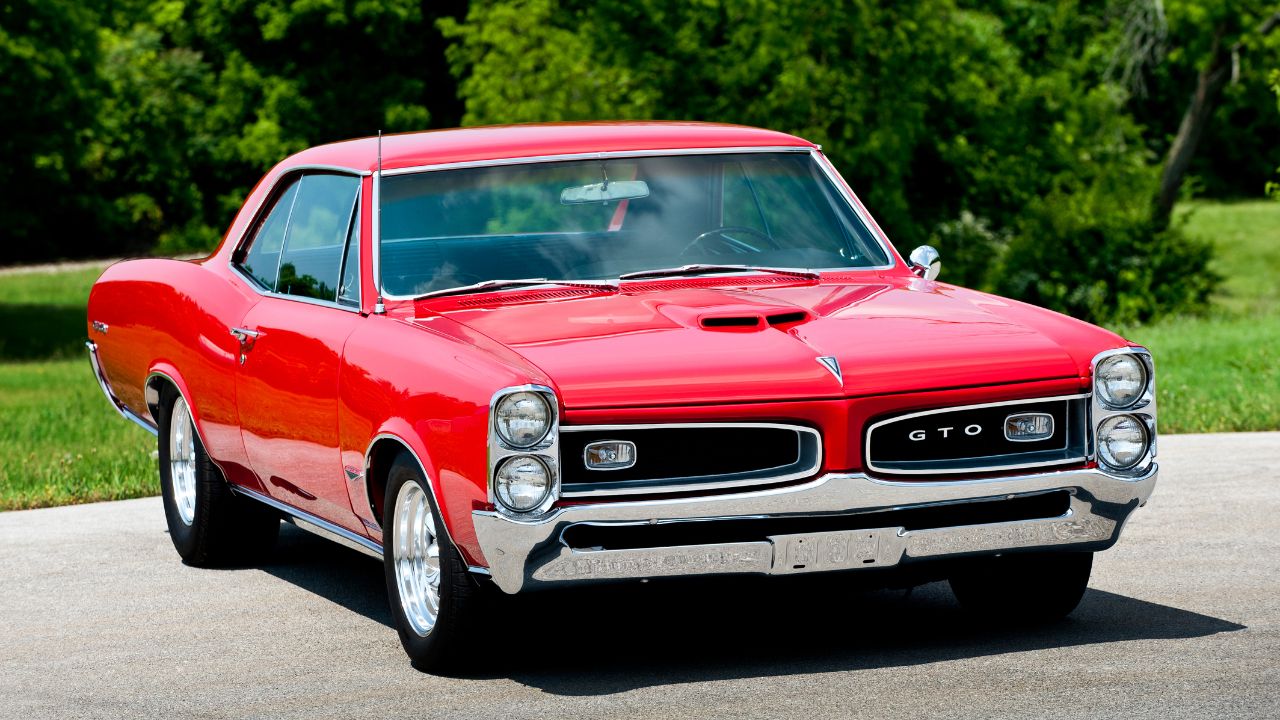
If you're serious about taking your car to the next level, then you'll want to check out some of the best cars for drifting. These include the Subaru WRX STI (Miata MX-5), and Toyota JZX-90. Each one is fast and powerful and can be used on the track. Find out which cars are the best for drifting. These cars may surprise you!
Ford Focus RS
Ford Focus RS is a great choice for those who want to learn drifting. This car features an adaptive damper, a mountune-powered power pack, and a suspension system. This system allows the driver to set the car's suspension so it can move softer in the front and firmer in the back. You can test drive this vehicle on a private track, or on public roads.

Mazda Miata MX-5
There are many cars out there that can be used for drifting but the Mazda Miata MX-5, while it is certainly the best, is still the most enjoyable to drive. Professional drifters swear by its reliability and 4 cylinder DOHC motor. The vehicle has sold over one million units, making it one of the most popular vehicles for drifting. Amateur drifters love the fun factor, which makes it a popular choice.
Subaru WRX STI
Subaru offers a manual variant of the WRX STI as well as the WRX STI. Although the WRX STI only comes in a manual transmission it is lighter at 50 pounds. It can go from 0 to 100 km/h within 5.8 seconds. It is slightly heavier than a standard Impreza and lighter than the WRX STI trim.
Toyota JZX-90
The Toyota JZX-90 drifting automobile is a symbol of Japan's automotive industry. It comes with turbocharged or gasoline engines and is available in either diesel or gasoline. It is illegal to import in the United States. You can buy a JZX-90 online, however, for around $40 USD. These cars were first raced back in 1990. Toyota stopped importing these cars to the United States.

BMW E46
The BMW E46 has been the preferred drift car for many countries. This vehicle outperforms all s bodies in every region. It is a great drifting car due to its naturally aspirated engine and German engineering. The European trim comes with a 3.0 Liter straight six. Power is delivered via a five-speed manual transmission, and a limited slip differential. It is powerful thanks to its 282 horsepower.
FAQ
How can I prepare for a apprenticeship as a mechanic?
It is important to have an understanding of what you are going into. Understanding the mechanics and working of cars is essential. This will allow you to be prepared for your first day at work.
You also need to know how to fix simple problems such as broken lights, tires, etc.
This article will show you how to diagnose and fix issues.
It is also important to know how the different pieces fit together in order to put them together again.
Finally, you need to be able to safely and efficiently use tools.
All these aspects will help you become a competent technician.
Does it really matter what college I choose?
Not really. There is no difference in the programs offered by colleges for getting into automotive work. You will find that some schools offer better programs than others. If you are looking for something more specific, consider going to another school.
What qualifications is required to become an mechanic?
A series of exams is necessary to become a mechanic. These include:
-
A test of general knowledge
-
A practical exam
-
An apprenticeship test
These tests are meant to help you grasp the fundamentals of mechanical engineering and physics, before you begin your journey as a mechanic.
After passing these tests, you will be eligible to become a mechanic. You will still need to complete an apprenticeship. This will include training in the trade.
You'll need to attend classes and workshops to learn everything you need to know about repairing vehicles. Additionally, you will need to work with experienced mechanics.
For mechanic success, you'll need to be focused and meticulous. You'll need to pay close attention to every aspect of vehicle repairs.
You'll need patience and persistence to become a successful mechanic. If you don’t like following directions, then this career path may not suit you.
If you enjoy cars and fixing them, this job could be a good fit for you.
What qualifications do I need to be a truck mechanic?
This job requires you to be a skilled mechanic, although you do not need any formal training. Your expertise is invaluable because you know how quickly and efficiently to diagnose problems.
Also, your knowledge of diesel technology will be a benefit as you can help us understand which parts are needed for our vehicles.
What type of job is there for a car mechanic?
For car mechanics, there are three main areas for employment:
-
Automotive repair shops
-
Dealerships
-
Independent garages
Automotive repair shops
This is where most people first think of becoming a mechanic. It's actually the easiest way to start. Either work for someone else's shop or you can start your own.
You will need to join a union if you want to work in a shop. Once accepted into the union you will be trained by the union.
Once you complete the training, it's time to get started.
If you plan to open your own garage you will need to register with government. You'll need to meet certain standards after you register.
You will receive a license to run your garage once you have registered.
You can sell spare parts or do minor repairs with your license. It won't allow you to fix major engine problems.
Apart from selling spare parts, customers will also expect you to provide guidance and advice.
Dealership jobs
Most dealerships employ mechanics that specialize in one aspect of the vehicle. They might be able to only fix brakes or replace tires.
Some dealers also have general mechanics that can handle all aspects.
Some positions require that applicants complete training before they can be allowed to work. This allows employers to select the most qualified candidates for their roles.
Some dealerships will hire graduates straight from college. These graduates are familiar with the fundamentals of mechanical engineering so they can easily learn about cars.
Independent garages
Independent garages don't belong to any particular dealership. Instead, they focus on high-quality customer service.
Independent garages are not associated with any companies so they can afford higher wages. This makes them generally more well-paid than jobs at dealerships.
But this doesn't mean that independent garages are necessarily better places to work. Many business owners prefer to be in control of their businesses than to delegate it to employees.
You might find yourself working long hours but having no control over what happens in the day.
Additionally, you should expect to earn lower wages if employed by a dealership.
There are many jobs that can be switched between. It is possible to switch between different types of jobs if your current employer would prefer you to work at a dealer.
Alternatively, if you'd like to work at an independent garage, then you could try applying directly to the owner of the garage.
Unfortunately, finding a new job can be difficult. There are plenty of other factors that influence how much you earn.
You might also consider the vehicle type you repair, and whether extra labor is charged.
Statistics
- There were 749,900 jobs available for automotive service technicians and mechanics in 2016, which is expected to grow by six percent through 2026. (jobhero.com)
- 52% of Mechanics in the United States think their salaries are enough for the cost of living in their area. (indeed.com)
- According to the BLS, the median annual salary for automotive service technicians and mechanics in the United States was $44,050 in May 2020. (uti.edu)
External Links
How To
How to properly diagnose and repair your vehicle
The symptoms of your vehicle are the first thing you need to look at in order to determine whether it is in dire need of repairs. Follow these steps to properly diagnose your vehicle.
-
Check engine lights. Inspect the dashboard light indicators. These include the engine lights, the oil pressure gauge and the battery light indicators. The RPM gauge and coolant temperature gauge should also be checked. If they have been flashing for more days than usual, it could be a sign that something is wrong with the vehicle.
-
Examine the treads of the tires. Tire wear can lead to problems in handling and brake performance. Also, inspect the treads of your wheels. They should be clean and smooth. This can be done by removing the wheels from the vehicle and taking them off. You can check the tread wear with a flashlight.
-
Check the level of brake fluid. You must keep track on the level of brake fluid in your vehicle. This will ensure that your brakes run smoothly. Low brake fluid levels can cause brake failure when you apply pressure.
-
You should test the suspension system. Vehicles usually have a suspension system that helps absorb shocks and vibrations while driving. It provides better control and allows smoother acceleration and deceleration. You might notice a wobbly feeling or uncontrollable shaking in your vehicle if it has a problem with its suspension. If you are unsure if your vehicle is suffering from a suspension problem, put weight on the front and rear axles to check the movement.
-
Take a look at the steering column. Steering columns connect the steering wheels to other parts of the vehicle. Accidents often damage steering columns. You should replace the steering column if it is loose or weak.
-
The exhaust pipe should be observed. Exhaust pipes move gases from combustion chamber to atmosphere. You can let harmful fumes into your home if your exhaust pipes crack or leak. Additionally, your tailpipe should be fixed immediately if it is bent.
-
Look under the hood. If you see anything unusual, take a look under the hood. You could have fluids leaking from the engine. Also, professional technicians should be called if you detect an unusual smell coming out of your engine compartment.
-
You should inspect your air filter. The outside environment can collect dust and other debris in your vehicle's air filters. Your vehicle will run less well if it has a dirty filter. Replace your air filter regularly.
-
Make sure you check the fan belt. Your vehicle's fanbel connects the engine and transmission. If it breaks, the engine won't turn over. It is easy to replace the belt. You will need a screwdriver, pliers and a pair of pliers.
-
Check the radiator hose and hoses. The radiator hose transports water from radiator to engine. It can cause hot liquid to leak onto the engine if it is damaged or cracked. To repair the leaky hose, all you need is a pair if needle-nosepliers.
-
Make sure you have the windshield wipers checked. Windshield wipers use electricity to remove snow and rain. If they stop working, they could leave streaks on your window glass. You can fix the problem by changing the washer fluid.
-
You should inspect the cables. Batteries provide power to electrical systems inside your car. Before you change batteries, disconnect the positive cable. Failure to do so can damage your alternator.
-
Pay attention to your headlights. The headlights will illuminate the road ahead. It can lead to poor visibility if they aren't working properly. Check the bulbs to see if they've burned out.
-
Check the lights. You can warn other drivers if you approach them at night. One that doesn't work could cause you to be distracted, and possibly lead to an injury.
-
You should inspect your brakes. Brakes slow down your vehicle before a collision. If the brakes fail to work correctly, your car could lose control and collide with another vehicle.
-
Change the oil. Your engine will stay lubricated by the oil. It prevents metal parts from rusting too quickly. Changing the oil every month is recommended.